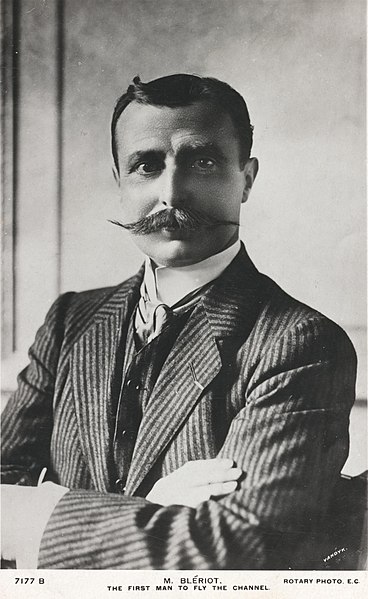Louis Charles Joseph Blériot was a French aviator, inventor, and engineer. He developed the first practical headlamp for cars and established a profitable business manufacturing them, using much of the money he made to finance his attempts to build a successful aircraft. Blériot was the first to use the combination of hand-operated joystick and foot-operated rudder control as used to the present day to operate the aircraft control surfaces. Blériot was also the first to make a working, powered, piloted monoplane. In 1909 he became world-famous for making the first airplane flight across the English Channel, winning the prize of £1,000 offered by the Daily Mail newspaper. He was the founder of Blériot Aéronautique, a successful aircraft manufacturing company.
Blériot c. 1911
Share of the Etablissements L. Blériot, issued 27 September 1905
The Blériot V canard monoplane, built in January 1907
The first Blériot XI in early 1909
An aircraft pilot or aviator is a person who controls the flight of an aircraft by operating its directional flight controls. Some other aircrew members, such as navigators or flight engineers, are also considered aviators because they are involved in operating the aircraft's navigation and engine systems. Other aircrew members, such as drone operators, flight attendants, mechanics and ground crew, are not classified as aviators.
U.S. Army Air Forces test pilot Lt. F.W. "Mike" Hunter wearing a flight suit in October 1942
Pilots landing a Boeing 777
A U.S. Air Force F-16 pilot in flight
A United States Air Force RPA pilot.








